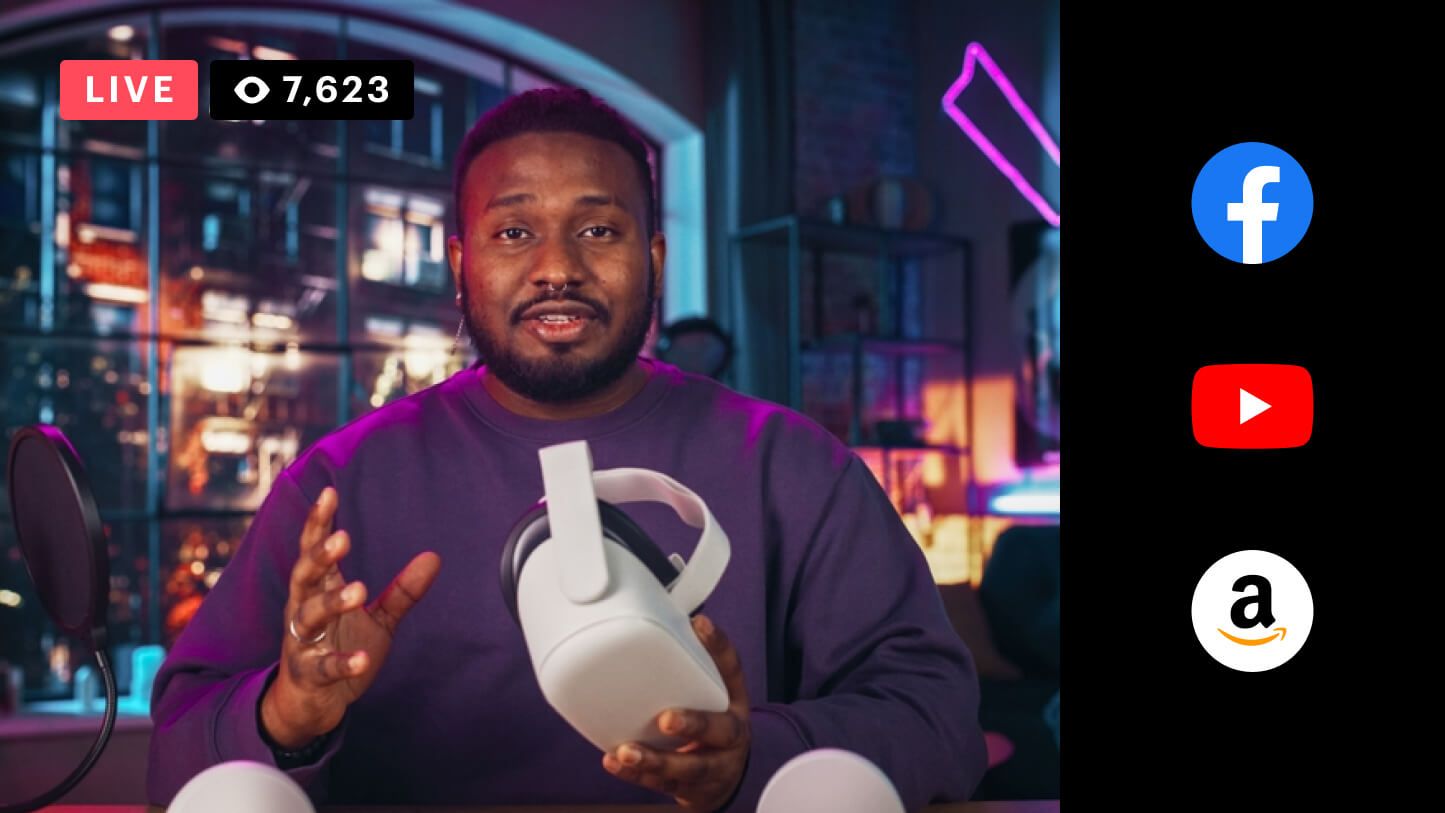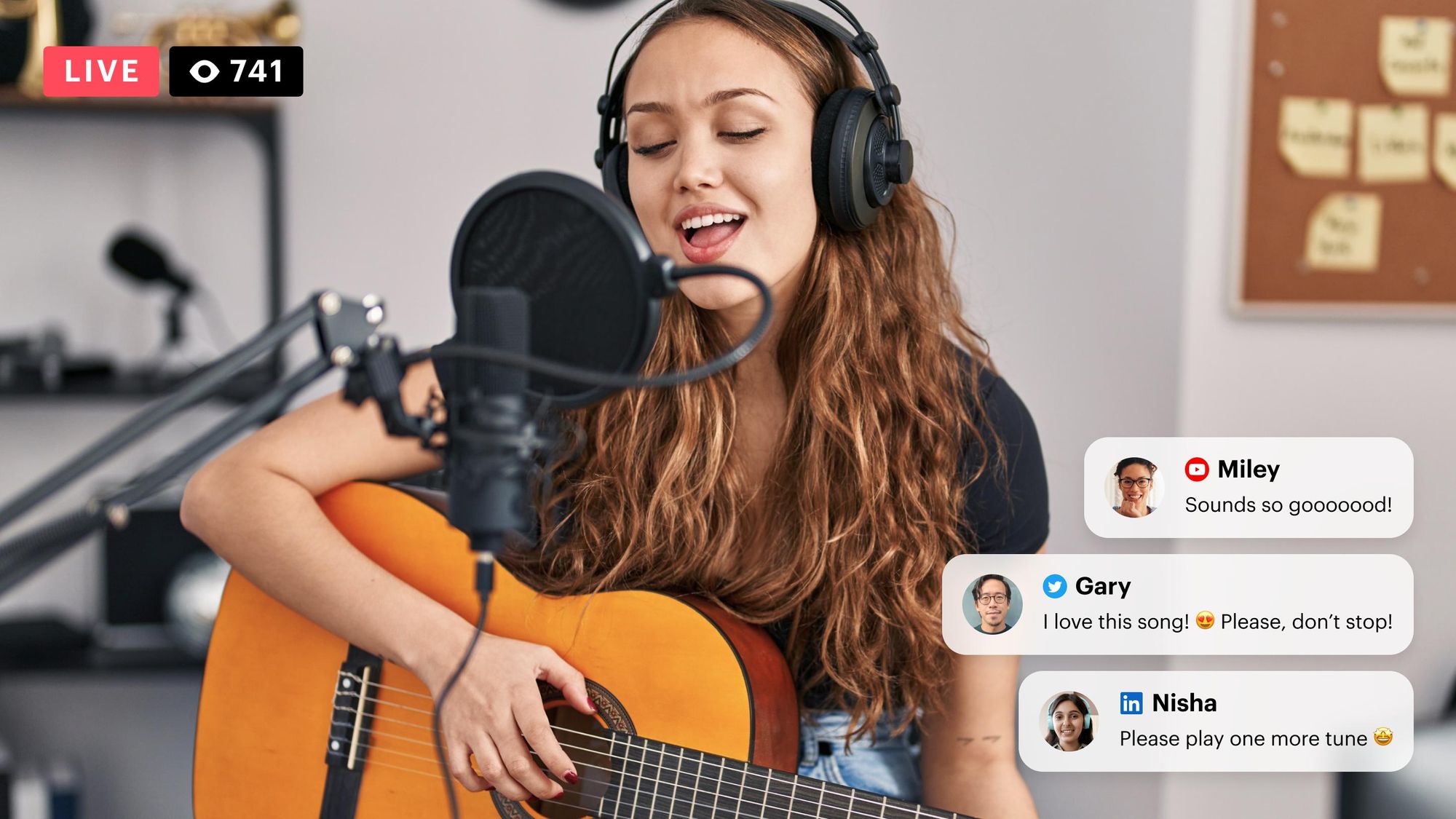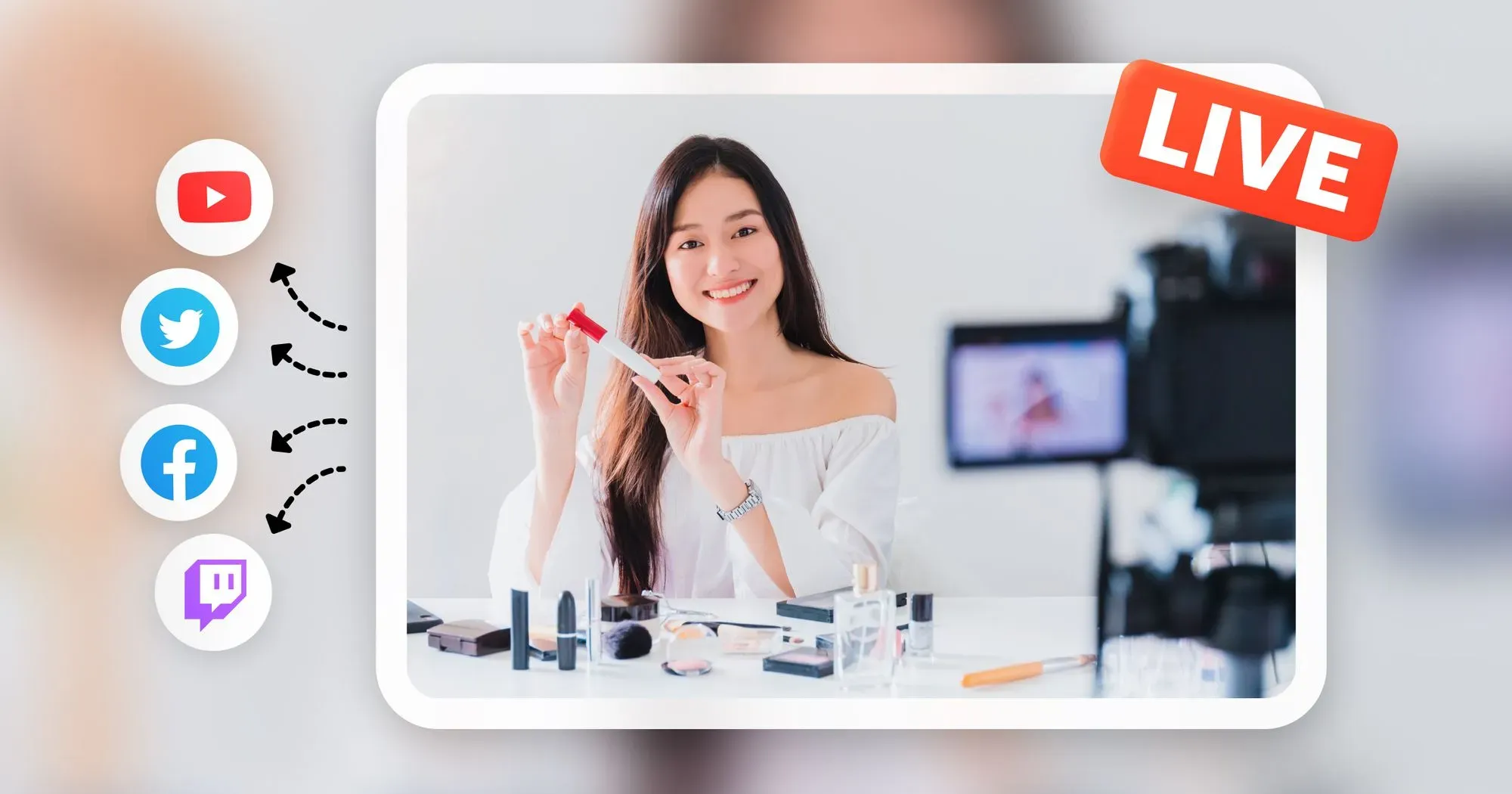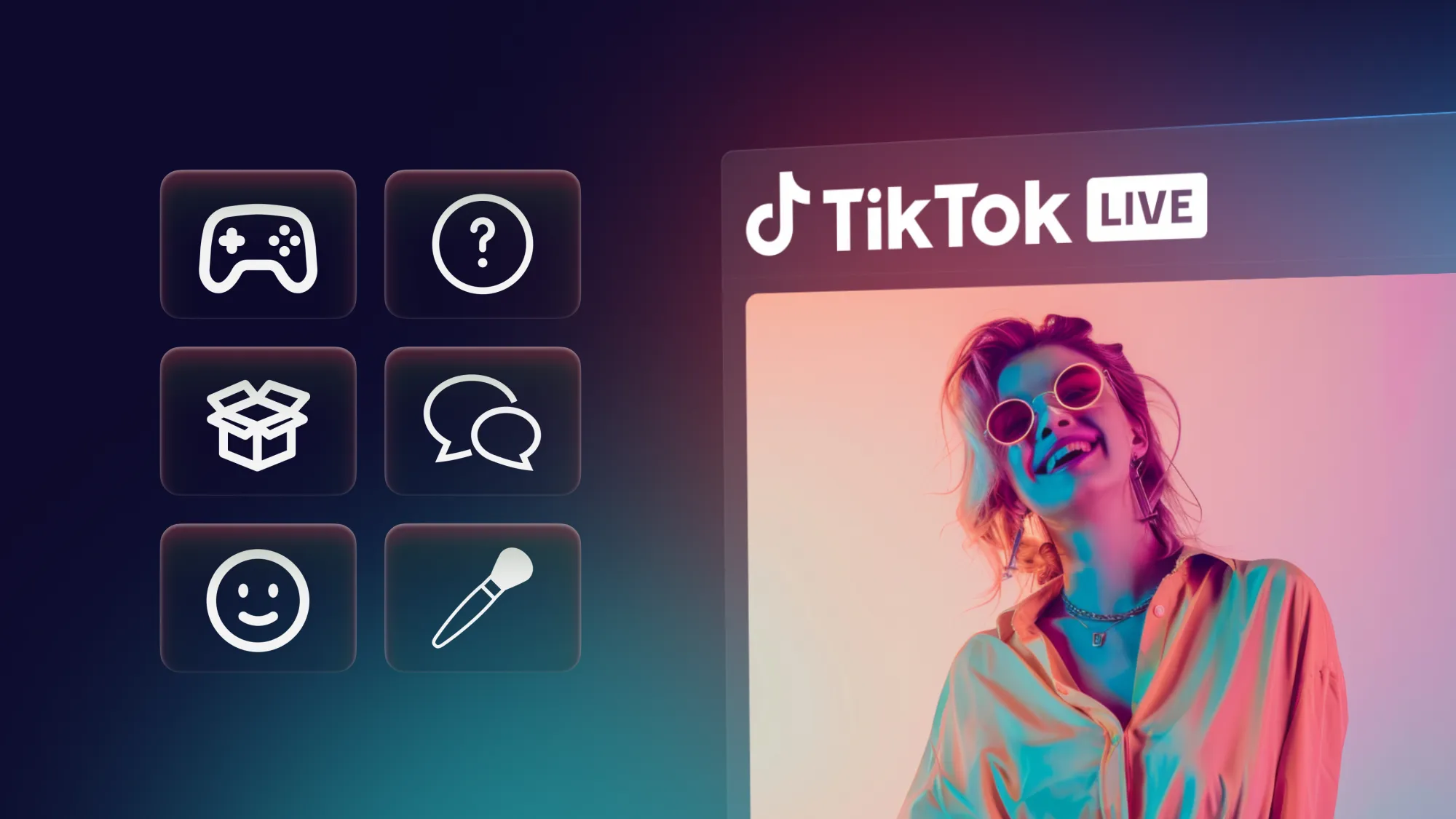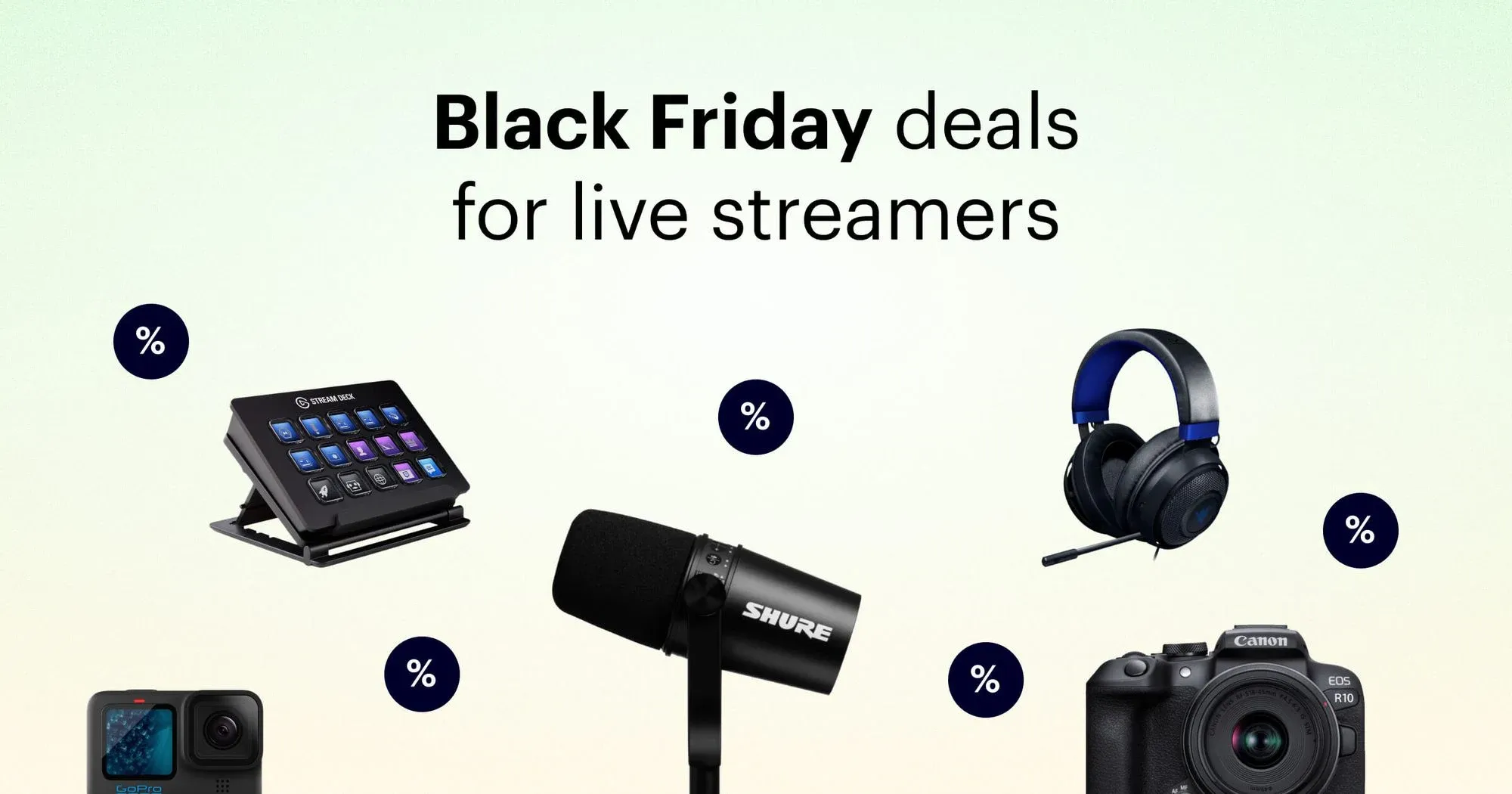Live selling uses live videos to showcase products or services, allowing customers to buy those products in real time and without leaving the live stream. Also known as live shopping, it mostly takes place on social media networks but in recent years, platforms dedicated primarily to live selling have gained popularity.
Live shopping is appealing to Gen Z, who prefer mobiLive sellingle-first shopping experiences and do a fair amount of online shopping on social media networks. Millennials are also big online shoppers, so live shopping has the potential to gain steam with this demographic as well. There are enormous opportunities for brands that want to get into live shopping.
If you’re new to live commerce, don’t worry, this guide covers everything you need to know. Learn which platforms to stream on and get tips for making your live selling broadcasts successful.
Benefits of live selling
With the growth of online retail each year, brands have to differentiate themselves and their products. Live sales can make your e-commerce brand stand out from other online stores. If you’re a content creator, live selling can also be a way to monetize your live streams.
World-wide audience
Social platforms like Amazon, YouTube and Instagram have millions of users that you can tap into with live shopping videos. You can also easily reach customers from around the world, gaining international exposure for your brand and widening your customer base.
Better customer experience
When asked, Gen Z consumers said they liked live selling because of the exclusive discounts and getting ideas and inspiration for how to use the products. Other reasons included the ability to make smarter purchasing decisions and receive recommendations.
Community building
Live selling combines the highly social aspect of live video with the accessibility of online retail. People join a live shopping event for the interactions with your brand and other customers — not just for the products. By taking advantage of built-in engagement tools on your live selling platform of choice, you can build and solidify a community around your brand and attract viewers that share your values and identify with your brand personality.
Cost efficiency
Live video production doesn’t cost much — all you need is a camera, mic and internet connection and most platforms let you stream for free. Of course, you can increase the production level of your broadcasts by investing in higher-quality gear and hiring video production experts to help. Ultimately, you can determine your own budget.
Fewer returns
When customers purchase products featured on live shopping streams, they’re 40% less likely to return those items than if they bought them from a traditional e-commerce store. That can translate into some serious sales.
The best live selling platforms
Nowadays, there are many live streaming platforms where you can sell your products. Social media platforms are the most popular because they have the largest user base, allowing you to attract more buyers. Some social networks have implemented live shopping features to make the buying experience seamless for viewers.
Amazon Live
Millions of people buy on Amazon. The online marketplace accounts for nearly 38% of the U.S. e-commerce market — making Amazon Live a logical choice for live selling.
To be eligible for streaming on Amazon Live, you either need to join the Amazon Influencer Program or be a registered Amazon Seller. If you’re in the Amazon Influencer Program, you get your own Amazon page and the ability to earn commissions on products you sell through streaming. You can read all about the requirements and how to create engaging, shoppable streams in our full guide to streaming on Amazon.
After you’re approved, you can go live on the Amazon app on your smartphone or use a streaming software like Restream to go live from your desktop. A product carousel appears below your stream and you can add any Amazon products to it, whether they’re your own products or ones that you curate.
70% of shoppers look to Instagram for their next purchase, so if you already have a solid presence on the platform, it can be a good choice for a live shopping app. To sell products on Instagram, you need to have an Instagram shop, which you can set up through Facebook’s Commerce Manager.
You can create product detail pages with relevant information on your entire product catalog. Then, you can add product tags to posts and ads that link back to your catalog.
YouTube Live
Streaming live sales on YouTube gives you access to more than 933 million worldwide users. Since YouTube Live is a generalist platform that hosts gamers, retailers, artists and content creators of all kinds, you’ll face some competition. One way you can stand out is by using YouTube’s Shopping.
You can connect an e-commerce store and sell your own products on your YouTube channel if you are already a YouTube Partner and you don’t have a majority of videos set as “Made for Kids.” You also need to be set up with the Google Merchant Center.
To connect your Shopify store, for example, you’ll have to add it to the monetization and shopping section of your YouTube channel. Once you do that, you’ll then need to add the Google app to your Shopify account and verify your Google Merchant Center account. Then, you can select products for your product feed.
TikTok LIVE
TikTok has 1.5 billion monthly active users and has been downloaded over four billion times. It would be hard to pass up this gigantic user base if you’re considering live selling. TikTok lets creators and merchants set up shops full of their own products. During a live stream, you can pin products which viewers can buy directly from the app.
TikTok also lets you create LIVE Shopping ads that help people discover your live streams and lets them browse your products. To create a TikTok Shop, you either need to be a seller, creator, partner or affiliate. TikTok has even created a TikTok Shop Academy, with courses that help you learn how to set up and grow your TikTok Shop.
Restream live shopping
Restream’s live shopping feature lets you create customized, professional, shoppable broadcasts using your Shopify, Amazon, Etsy, WooCommerce or other e-commerce store account. If you don’t have a store, you can also add affiliate links or donation links — you can turn any URL into a QR code and display it on your stream.
The professional live streaming studio from Restream lets you create fully customized and engaging broadcasts with features like:
- Multistreaming to all social media platforms
- Branding your live shopping event
- Scheduling a live shopping event in advance to share with your audience and promote across your channels
- Getting comments from all platforms in one place
- Streaming directly from your browser with no downloads necessary
- Adding scannable QR codes to your stream to promote your products
- Uploading a pre-recorded video and setting it to go live so you can focus more on audience interaction
With Restream, you can start your own live home shopping network, featuring your products.
Live selling best practices — with examples
Keep these live selling tips and strategies in mind if you want to boost both engagement and sales on your live shopping streams.
1. Provide high-quality live content
Most viewers will not tolerate low-quality live streams — and they tolerate even less if you’re trying to sell them something. Ensure you have decent audio and video quality by doing the following:
- Check that you have a stable internet connection and a good upload speed for streaming.
- Get an external webcam. It doesn’t have to be top-of-the-line, as long as you also have good lighting.
- Get an external microphone. Having a decent mic is more important than having a decent webcam because viewers usually have a lower tolerance for bad audio than they do for bad video.
Example: Chocolatory by KitKat
KitKat combined Facebook live shopping with a targeted ad campaign to help promote the Chocolatory holiday campaign in Australia. The campaign tripled sales on kitkat.com.au and increased brand awareness. The live event on Facebook encouraged people to make even more sales using the Comment to Message feature during the stream.
It’s a great example of using live shopping on social media with your social ads. Live shopping can fit seamlessly with the rest of your marketing efforts, especially on social media platforms that offer live experiences. It also shows the importance of a high-quality, professional stream.
2. Use storytelling
Viewers like to establish personal connections with live streamers. Tell them your story and show off your personality. What makes you and your brand unique?
When viewers can identify with you, they’ll feel a stronger emotional attachment and be more likely to make a purchase from your stream. Live streaming is the best digital tool for forging that connection because you can chat with people and answer their questions in real time.
Example: Bloomingdale’s
The department store Bloomingdale’s started hosting live shopping events during the pandemic to reach customers at home. For one of their events, they partnered with Jimmy Choo’s creative director, who talked to virtual shoppers about the season’s footwear trends and showed off a few products.
Bloomingdale’s sent macarons and cocktails to viewers before the live show, so they had refreshments during the event. The first 50 people who made a purchase from Jimmy Choo also received a custom sketch.
The takeaway from Bloomingdale’s is to make live shopping events an experience, not just another live stream. Don’t make it feel like viewers are just sitting in on another video conference call — make it fun and exclusive.
3. Focus on your products
Telling your story is important, but don’t forget to show off your products too! Have some samples with you and be prepared to showcase them, whether it’s trying them on, demonstrating how they work or giving practical use cases.
If you’re selling clothes, show your audience how to wear and accessorize them. If you’re selling cosmetics, do a tutorial on how to achieve a certain look with your products.
Example: JCPenney
JCPenney collaborates with influencers to host themed live shopping events. The guest influencer either runs the stream or joins as a co-host and presents their favorite products available from JCPenney.
One series of JCP Live broadcasts featured founders of beauty brands who not only showed off their brands’ products but also gave advice on running a business and growing a community. By partnering with influencers for live selling events, JCPenney taps into a wider audience. They also give influencers a platform to share and promote their favorite products.
The other big takeaway from JCP Live is to make your live sales themed: focus on beauty products for one session, then fashion the next, then home decor, etc. Don’t lump products from different categories into the same live stream.
4. Communicate with your audience
Try to engage your viewers, answer their questions, and make them feel as if you’re there exclusively for them. Lots of platforms have engagement tools, like polls or games. Invite guests or co-hosts onto your stream so you can interview them or let your audience ask them questions.
If you use Restream Studio to host your live selling stream, you can easily add a remote guest by sending them a secure link to join. Restream’s chat feature also lets you combine all the live chats from each platform you’re streaming to into a single widget, so you can quickly and easily interact with everyone who’s watching your stream.
Example: Kiehl’s Malaysia
Skincare brand Kiehl’s ran an ad campaign in Malaysia using Instagram Live. Kiehl’s took advantage of two things: Instagram’s position as a platform for discovering new beauty products, and the heavy shopping season that coincides with Ramadan. The Instagram Live sessions feature Kiehl’s beauty advisors answering viewers’ questions about products and offering skincare tips for Ramadan.
Kiehl’s got an 8x return on ad spend for this campaign and 50% of new customers for that year came from this campaign. The takeaways from this live shopping example are to know your audience and foster communication. Kiehl’s knew that people would be more open to making purchases during Ramadan, so they planned their live session around it.
5. Use QR codes and clickable links for products
A huge drawback for buyers is a tough purchase process. Take advantage of live shopping features so you can add a product carousel to your stream. That way, viewers can purchase products without leaving the stream.
To make the live shopping experience even more seamless, you can also display product QR codes on-stream. Viewers can simply scan the code with their mobile device to get to the product’s page, all without leaving your live stream.
With Restream’s live shopping QR codes, a notification appears every time a code gets scanned that all viewers see. When a product is getting a ton of scans, all of your viewers will see it — which makes that product more appealing.
6. Multistream
Share your live streams on Facebook, YouTube, TikTok, Instagram and any platforms where you have a decent following or subscriber count. Get as much exposure for your content as possible by streaming to multiple platforms at once. Use Restream to go live on multiple platforms at once, right from your web browser.
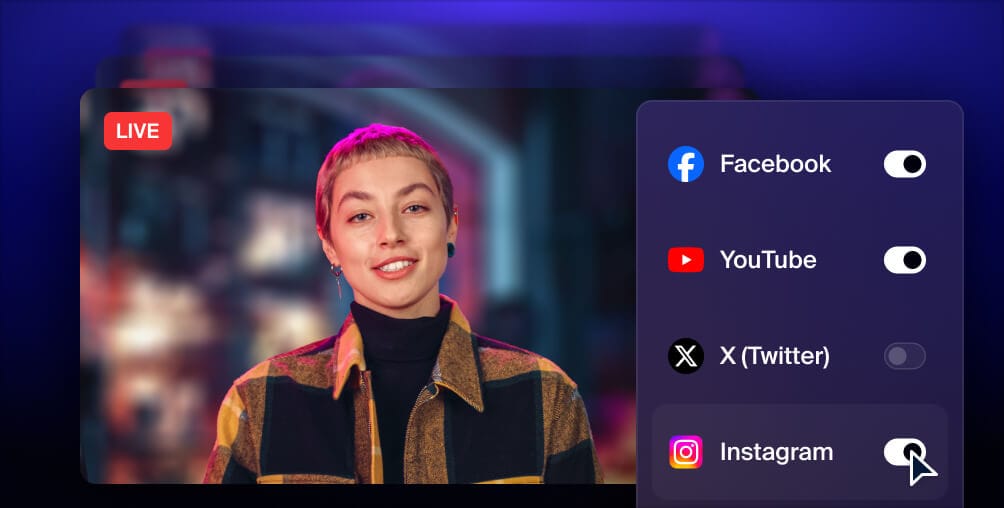
Get more views with multistreaming
Reach more people, and meet viewers where they like to watch. Live stream to YouTube, Instagram, Facebook, Twitch, X, TikTok, LinkedIn, and more at once.
Example: Quivr
Coffee and tea-maker Quivr started streaming on Instagram and TikTok, but eventually moved their live commerce streams to Amazon Live. Their logic for the move was simple: viewers on Amazon are more primed to purchase than they are on Instagram or TikTok, which are entertainment-first platforms. Promoting their nitro cold brew coffee on Amazon has driven more sales.
What you can learn from Quivr is that the platform you stream to matters. Amazon Live works best for this brand and it might for yours too, but maybe you’ll have better luck elsewhere. The trick is figuring out where your most qualified customers spend their time and reaching them on that platform. You can experiment with multiple platforms with multistreaming.
FAQs
What is live selling?
Live selling is promoting and selling products through social media channels using live video. Sellers typically do live demonstrations of the products or answer viewer questions during live selling streams. Shoppers like live selling because they can learn much more about a product than seeing an image, watching a pre-recorded video or reading an article.
How do I start selling live?
To start selling products on live streams, you don’t need much: just a camera, microphone, computer and live streaming software like OBS or Restream Studio. You should decide whether to live stream on social media platforms like YouTube, Facebook and Instagram, or whether you want to sell products on live shopping platforms like Amazon Live.
What is the best live selling platform?
One of the best options for live selling is Instagram Live. It has a huge user base and its users already use the app to discover and shop for new products. Of course, the best live selling platform for you depends on a few factors: the products you’re selling, who your target customers are and how much you’d like to customize your stream.
What kinds of products can you sell on live shopping streams?
According to Shopify, the most trending items to sell online in 2024 are: vitamins and supplements, skin care and makeup, coats and jackets, bicycles, art and crafting materials, drinkware, perfume and cologne, wine, socks, bedsheets, posters and artwork, candles, bath and body, cookware, nail care, underwear, motor vehicle parts, mobile phone accessories.
How does Amazon Live selling work?
To start selling products on Amazon Live, you either need to be a registered Amazon Seller or a member of the Amazon Influencer Program. Once you’re approved, you can start live streaming on Amazon Live to promote your products or your affiliate products. You can either stream with the Amazon Live mobile app or on desktop with a broadcasting software such as OBS or Restream Studio.
Let’s wrap up
Anyone can start selling things online with the help of live streaming. Considering the growth of the live streaming and live commerce market, people all over the globe have started using this strategy. You can sell just about anything on live streams, from apparel and cosmetics to jewelry and books.
You can start selling on one of the most popular platforms, like Amazon Live, YouTube Live and Instagram, or simply multistream on all of them at once with Restream. When done right, live selling streams will help drive more sales and make your brand stand out.

